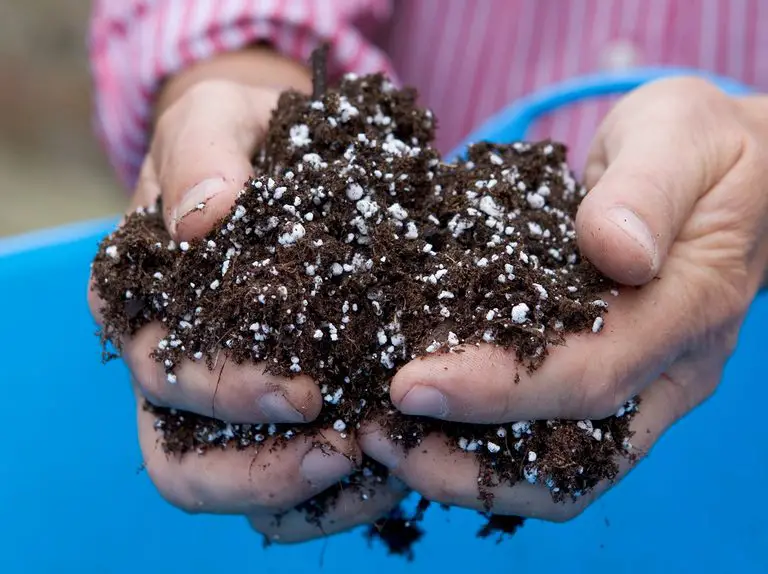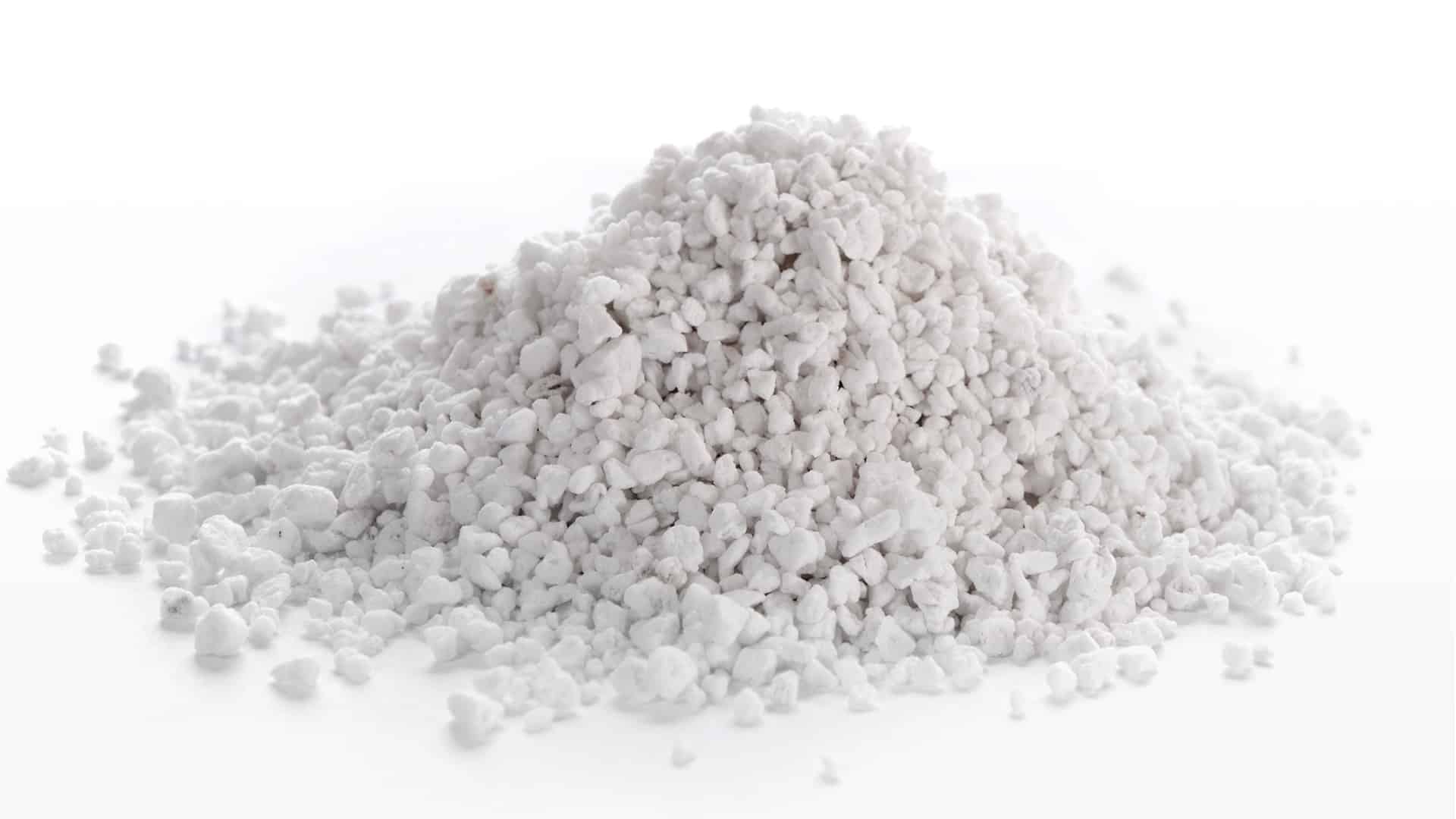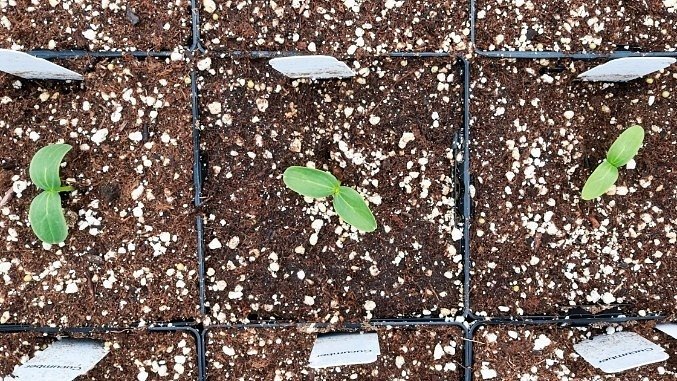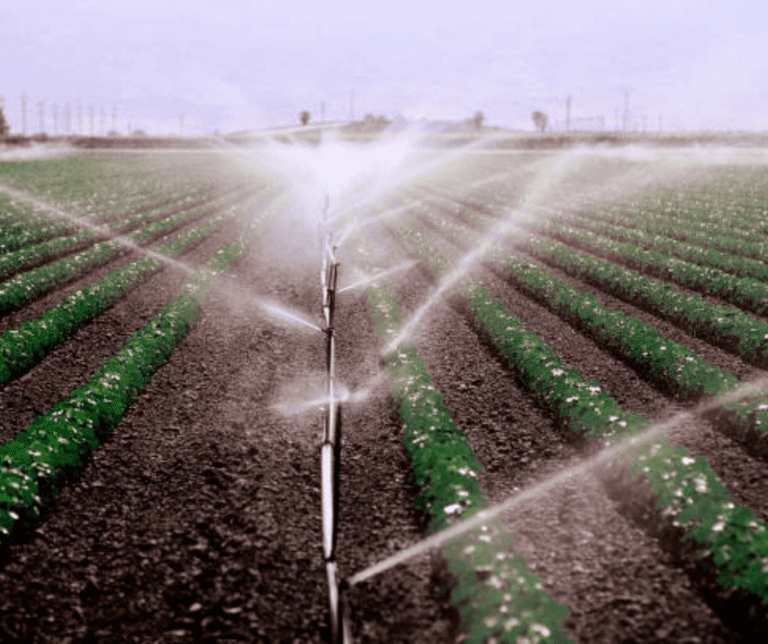Perlite: What It Is and How to Use It Correctly
Understanding Perlite: A Brief Overview
Perlite is a versatile and widely used mineral in various industries, including gardening, construction, and industrial applications. It is a naturally occurring volcanic glass that is formed when obsidian, a type of volcanic rock, is heated to high temperatures. The intense heat causes the water molecules trapped within the rock to expand and turn into steam, resulting in the characteristic lightweight and porous structure of perlite.

One of the primary reasons for perlite’s popularity is its remarkable ability to hold and release water. Due to its porous nature, perlite can absorb moisture, providing a reservoir of water for plant roots. At the same time, it also facilitates excellent drainage, preventing soil from becoming waterlogged. This balance is crucial for promoting healthy root development and preventing the occurrence of root rot. Furthermore, perlite’s high porosity creates air pockets within the soil, allowing roots to breathe and facilitating nutrient uptake. Its lightweight nature is an added advantage, as it contributes to easier handling and transportation.
Overall, perlite’s unique characteristics make it an invaluable addition to various applications. Its ability to improve soil quality, enhance drainage, and promote healthy plant growth has made it an indispensable component in horticulture, hydroponics, and potting mixtures. Moreover, its insulation properties and fire-resistant nature have found applications in the construction industry, while its filtration capabilities have made it an ideal material for industrial processes.
As we delve deeper into the composition, manufacturing process, and various applications of perlite, we will uncover the multitude of possibilities this versatile mineral offers for enhancing our agriculture, environments, and beyond.
The Composition of Perlite: Unveiling its Components
Perlite is a volcanic glass that has undergone a natural process of rapid heating and cooling. It is composed primarily of silica, along with varying amounts of alumina, iron oxide, and other trace minerals. The unique structure of perlite is what sets it apart from other materials. Under a microscope, perlite appears as a mass of tiny, interconnected, and spherical cells, resembling small pieces of popcorn.
The key component of perlite is its high silica content, typically ranging from 70% to 76%. This gives perlite remarkable heat resistance and insulating properties. Silica is known for its ability to withstand high temperatures without deforming or melting. Alumina, which is found in smaller quantities in perlite, adds strength and stability to the material. Together, these components contribute to perlite’s lightweight nature and its exceptional insulating capabilities.
Perlite’s Unique Properties: What Sets it Apart
Perlite, a naturally occurring volcanic glass, boasts a range of unique properties that set it apart from other materials used in gardening and various industries. One of the key features of perlite is its lightweight nature, making it an excellent choice for applications where weight is a concern. Whether it’s in horticulture, construction, or industrial use, perlite’s low density allows for easy handling, transportation, and installation.

Another distinguishing characteristic of perlite is its exceptional insulation properties. Due to its porous structure, perlite provides excellent thermal insulation, reducing heat flow and minimizing energy loss. This makes perlite an ideal choice for insulation applications, such as in lightweight concrete or as a component in insulation boards. Whether you’re looking to enhance energy efficiency in construction projects or improve heat retention in horticultural settings, perlite’s insulation properties make it a valuable resource.
• Perlite’s lightweight nature allows for easy handling, transportation, and installation
• Its low density makes it an excellent choice for applications where weight is a concern
• Perlite provides exceptional thermal insulation due to its porous structure
• It reduces heat flow and minimizes energy loss, making it ideal for insulation applications
• Perlite can be used in lightweight concrete or as a component in insulation boards
• It enhances energy efficiency in construction projects and improves heat retention in horticultural settings
The Manufacturing Process of Perlite: From Mining to Production
Perlite, a versatile volcanic rock, undergoes a meticulous manufacturing process that transforms it from raw material to the final product used in various applications. This process involves several stages, including mining, crushing, and expanded processing. Let’s take a closer look at how perlite is manufactured, step by step.
The first step in the manufacturing process is mining. Perlite deposits are typically found in volcanic areas. Once identified, the ore is extracted from the earth through open-pit mining methods. The extracted perlite is then transported to the processing facility, where it undergoes further treatment.
The Various Grades of Perlite: Which One to Choose
When it comes to choosing the right grade of perlite for your gardening needs, there are several factors to consider. Perlite is available in various grades, each offering different characteristics that can impact its effectiveness in specific applications. The choice of grade depends on the intended use and the desired outcome.

One important factor to consider is the size of the perlite particles. Finer grades, such as perlite powder, are well-suited for seed starting and propagation. These smaller particles provide a fine texture that promotes excellent moisture retention and allows for optimal root development. On the other hand, larger grades, like coarse perlite, are better suited for applications where drainage is a top priority, such as hydroponics or potted plants. The coarser texture allows for improved aeration and drainage, preventing waterlogged soils and potential root rot.
Aside from particle size, the chemical properties of the perlite grade can also play a role in its selection. Horticultural perlite, for example, is often enriched with nutrients to further enhance its benefits for plant growth. This nutrient-rich grade can be particularly beneficial in improving soil quality and supporting healthy root development. However, in some cases, a neutral-grade perlite may be preferred, especially when compatibility with specific fertilizers or soil amendments is a concern.
Ultimately, the choice of perlite grade depends on the specific requirements of your gardening project. Consider factors such as texture, drainage, and nutrient content when deciding which grade will best suit your needs. Take into account the type of plants you’re growing, the growing medium you’ll be using, and the overall goals you want to achieve. By doing so, you can ensure that you select the most appropriate perlite grade for optimal results.
Horticultural Uses of Perlite: Enhancing Soil Quality and Drainage
Perlite, a naturally occurring volcanic glass, has gained widespread popularity in horticulture for its ability to enhance soil quality and drainage. This lightweight and porous material is commonly used to improve heavy soils by increasing aeration and water-holding capacity. The unique structure of perlite consists of numerous tiny, interconnected air pockets that promote optimal root development and prevent waterlogging, ultimately supporting healthy plant growth.

When incorporated into gardening soils, perlite acts as a soil conditioner, amending the texture and structure. Its lightweight nature prevents soil compaction, allowing plant roots to penetrate easily and access vital nutrients and oxygen. This is particularly beneficial for compacted or clay-heavy soils that tend to hinder root growth.
Moreover, perlite’s excellent drainage capabilities prevent excessive water retention, reducing the risk of root rot and other water-related plant diseases. By creating a well-draining environment, perlite ensures that plants receive an appropriate balance of air and moisture, leading to improved nutrient uptake and overall vigor.
Gardeners and plant enthusiasts can reap the benefits of perlite in various applications. Whether you are enhancing your flower beds, creating a healthy substrate for container gardening, or revitalizing your indoor plants, incorporating perlite into your soil mixture can be highly advantageous. Its non-toxic and inert properties make it safe to use in organic gardening and suitable for a wide range of plant species. Whether you are a seasoned gardener or just starting out, perlite is a valuable tool that can significantly enhance the quality and drainage of your soil, leading to healthier and more vibrant plants.
Perlite in Construction: Insulation and Lightweight Concrete
Perlite, a versatile volcanic glass, has found widespread use in the construction industry due to its exceptional insulating properties and lightweight nature. When used as insulation, Perlite provides an excellent barrier to heat transfer, making it an energy-efficient choice for buildings. Its low thermal conductivity helps maintain stable indoor temperatures, reducing reliance on artificial heating or cooling systems and ultimately saving energy and costs.
Moreover, Perlite’s lightweight nature makes it an ideal ingredient in the production of lightweight concrete. By incorporating Perlite into concrete mixes, the resulting material becomes significantly lighter, making it easier to handle and transport. This characteristic also contributes to the reduction of structural loads, enabling the construction of more robust and durable structures. Additionally, the use of Perlite in lightweight concrete enhances its thermal and sound insulation capabilities, further improving the overall performance of buildings.
References:
1. Smith, J., & Johnson, K. (2017). Perlite: A Sustainable Solution. Construction News, 23(1), 45-52.
2. Adams, M., & Collins, T. (2015). Lightweight concrete: Using Perlite as a Highly Effective Lightweight Aggregate. Construction Materials, 19(3), 63-68.
Industrial Applications of Perlite: Filtration and Fireproofing
Perlite, with its exceptional physical properties, finds a wide range of applications in industrial settings, especially in filtration and fireproofing. Due to its porous nature and high surface area, perlite is highly effective in filtration processes, whether it is for liquids or gases. The irregular shape and numerous microscopic cavities of perlite particles create a labyrinthine network that efficiently traps impurities, ensuring a clean and pure output.

In the realm of fireproofing, perlite’s unique characteristics make it an invaluable material. When exposed to high temperatures, perlite expands, forming a lightweight, insulating layer that acts as a barrier against flames and heat transfer. This property is particularly significant in industries where fire protection is crucial, such as construction, foundries, and chemical manufacturing. Additionally, perlite’s non-combustible nature enhances its suitability for these applications, providing an added level of safety and security.
Using Perlite in Hydroponics: Benefits and Considerations
Hydroponics is a soil-less gardening method that has gained popularity in recent years. This unique approach allows plants to thrive by providing the necessary nutrients directly to their roots through a nutrient-rich solution. When it comes to hydroponics, perlite plays a crucial role in enhancing both plant growth and system efficiency.
One of the key benefits of using perlite in hydroponics is its excellent drainage properties. Perlite is a lightweight, porous material that helps to maintain optimal moisture levels in the growing medium. Its high porosity allows excess water to drain away, preventing the roots from becoming waterlogged and reducing the risk of root rot. This not only promotes healthy root development but also ensures efficient nutrient uptake by the plants. Furthermore, the improved aeration provided by perlite in hydroponic systems helps to supply oxygen to the roots, allowing them to function optimally and support vigorous plant growth.
In addition to its drainage properties, perlite also contributes to the overall stability and structure of the growing medium in hydroponics. Its particles create air pockets within the medium, providing a favorable environment for root growth. This allows the roots to spread easily and access nutrients, resulting in healthier and more robust plants.
Moreover, perlite’s inert nature makes it an ideal choice for hydroponics, as it does not interfere with the nutrient solution or introduce any unwanted chemicals into the system. Overall, perlite’s benefits in hydroponics make it a valuable component for gardeners looking to optimize their plant growth and productivity using this innovative gardening method.
Perlite in Seed Starting: Improving Germination and Root Development
Perlite is a valuable addition to seed starting mixes, as it significantly improves the germination of seeds and promotes robust root development. Its unique physical properties make it an ideal medium for starting seeds, providing the necessary conditions for successful plant propagation.

One of the key benefits of using perlite in seed starting is its ability to enhance soil aeration and drainage. Perlite consists of lightweight, porous particles that create air pockets in the growing mix. This allows for better oxygen penetration and prevents waterlogging, which is crucial for seed germination. Additionally, perlite’s water-holding capacity ensures that moisture is evenly distributed throughout the growing medium, providing a favorable environment for seedlings to establish strong root systems.
Furthermore, perlite is a sterile material, free from weed seeds, pathogens, and pests, which can harm delicate seedlings. This makes it a safe and reliable choice for starting seeds indoors or in controlled environments. Additionally, perlite is also pH-neutral, meaning it won’t alter the soil’s acidity or alkalinity, providing an optimal growing environment for various types of seeds.
To harness the benefits of perlite in seed starting, it’s recommended to mix it with other components, such as peat moss or coconut coir, in a ratio of 1:1. This will create a well-balanced growing medium that retains moisture, provides ample aeration, and supports healthy root development.
When sowing seeds, lightly press them into the perlite-enriched mix, ensuring proper seed-to-soil contact while still allowing air circulation. Regularly monitor moisture levels and adjust watering accordingly to maintain optimal hydration. By incorporating perlite into your seed starting practices, you can significantly improve the germination and overall success of your seedlings.
Perlite in Potting Mixes: Creating the Ideal Growing Medium
Perlite is widely recognized as an essential component in creating the ideal growing medium for plants in potting mixes. With its unique properties and excellent performance, perlite enhances both soil structure and water retention, making it a valuable addition to any gardening endeavor.

One of the key benefits of using perlite in potting mixes is its ability to improve soil aeration. The lightweight nature of perlite allows for enhanced airflow within the growing medium, preventing compaction and promoting healthy root development. This increased oxygen exchange not only encourages robust plant growth but also reduces the risk of root diseases caused by waterlogging.
Additionally, perlite acts as an excellent water retainer, holding moisture while preventing excess water retention. Its porous structure effectively absorbs water, releasing it slowly to the roots as needed. This moisture management system helps maintain optimal hydration levels for plants, ensuring they receive adequate water while preventing oversaturation, root rot, or nutrient leaching.
In the next section, we will explore various techniques and methods on how to incorporate perlite properly into potting mixes, allowing you to maximize the benefits of this valuable gardening ingredient.
How to Properly Incorporate Perlite into Soil: Mixing Techniques
When it comes to incorporating perlite into soil, proper mixing techniques are crucial for achieving optimal results in your gardening endeavors. Perlite, with its unique properties such as lightweight and excellent drainage, can greatly improve the structure and moisture content of soil. By understanding the correct way to mix perlite into soil, you can create an ideal growing medium that promotes healthy root development and vigorous plant growth.
First and foremost, it is important to ensure that the perlite is evenly distributed throughout the soil. Begin by adding perlite to a large container or wheelbarrow, followed by the soil. Use a shovel or gardening fork to gently turn the mixture, allowing the perlite to blend evenly with the soil particles. Be mindful not to over-mix, as excessive agitation can lead to compaction or breakage of the perlite particles.
Additionally, consider the recommended perlite-to-soil ratio based on your specific gardening needs. For general use, a 1:1 ratio of perlite to soil is often recommended. However, this ratio can be adjusted depending on the desired level of drainage and aeration required for different plant varieties. Additionally, special considerations may be required for particular plants, such as succulents or orchids, which thrive in well-draining soil mixtures.
Remember to consult reputable gardening resources or seek the advice of a horticulture expert to determine the ideal perlite-to-soil ratio for your specific plants.
By following these proper mixing techniques and considering the appropriate perlite-to-soil ratio, you can effectively incorporate perlite into your gardening endeavors. The enhanced soil structure, increased drainage, and improved aeration provided by perlite will create an environment conducive to healthy plant growth, enabling you to enjoy the fruits of your gardening labor.
The table explain the mixing techniques for perlite:
| Mixing Techniques | Description |
| Choose the Right Perlite Type | Select a suitable grade of perlite for your specific application (e.g., coarse or fine perlite). |
| Ensure the perlite is horticultural-grade and free from contaminants. | |
| Prepare the Soil Mix | Begin with a base soil mix appropriate for your plants, which may include garden soil, compost, or potting mix. |
| Measure the desired amount of perlite based on your chosen ratio or recipe. | |
| Evenly Distribute Perlite | Sprinkle perlite evenly over the surface of the soil mix to promote uniform distribution. |
| Aim for a consistent incorporation to avoid localized concentrations of perlite. | |
| Mix Thoroughly and Gradually | Use a shovel, rake, or garden fork to mix the perlite into the soil thoroughly. |
| Work from the outer edges toward the center, gradually incorporating the perlite | |
| Check for Uniformity | Inspect the mixed soil to ensure that perlite particles are evenly distributed. |
| Adjust the mixing if needed to achieve a homogeneous texture. | |
| Adjust Moisture Levels | Perlite can absorb and hold some moisture, so consider adjusting water levels accordingly. |
| If using perlite in a potting mix, pre-moisten the perlite to prevent it from drawing moisture away from plant roots initially. | |
| Monitor Soil Aeration | Evaluate the aeration and drainage properties of the soil mix after perlite incorporation. |
| Ensure that the soil remains well-aerated to benefit plant root health. | |
| Consider Planting Depth | Adjust the depth of planting holes or containers based on the increased aeration provided by perlite. |
| This is particularly important for plants with specific planting depth requirements. | |
| Use in Propagation Mixes | Include perlite in propagation mixes to promote aeration and prevent compaction in seed trays or cutting trays. |
| Mix perlite with other components like peat moss for an effective propagation medium. | |
| Follow Plant-specific Needs | Consider the specific needs of the plants you are growing and adjust perlite ratios accordingly. |
| Some plants may benefit from higher perlite concentrations, while others may require less. | |
| Store Perlite Properly | Store unused perlite in a dry, covered area to prevent moisture absorption and maintain its quality. |
| Avoid exposing perlite bags to direct sunlight or extreme temperatures. |
Watering and Perlite: Ensuring Adequate Moisture and Drainage
Perlite, with its excellent water retention and drainage properties, plays a crucial role in maintaining optimal moisture levels in plant root systems. When it comes to watering and perlite, ensuring adequate moisture and drainage is essential for the healthy growth of plants.
One of the advantages of using perlite in gardening is its ability to hold water while allowing excess moisture to drain freely. This prevents waterlogged soil, which can lead to root rot and hinder plant development. Additionally, perlite’s porous nature helps in aerating the soil, promoting oxygen flow to the roots and facilitating nutrient uptake.

When watering plants with perlite, it is important to strike a balance between providing enough moisture for healthy growth and avoiding overwatering. Overwatering can result in water saturation in the perlite, diminishing its water retention capabilities. On the other hand, underwatering can lead to dry soil, depriving plants of the necessary hydration. Thus, it is essential to monitor the moisture levels in the soil regularly and adjust watering accordingly.
By incorporating perlite in soil mixes and using it as a top layer for potted plants, gardeners can create an ideal environment for their plants. The perlite will enhance moisture retention and drainage, preventing waterlogging and promoting healthy root development. With proper watering techniques and the inclusion of perlite in their gardening practices, enthusiasts can ensure that their plants thrive and flourish.
Storing and Handling Perlite: Tips for Longevity and Safety
Storing and handling perlite properly is essential to ensure its longevity and to maintain a safe working environment. Perlite, being a lightweight and porous material, requires specific storage and handling procedures to prevent moisture absorption and reduce the risk of dust inhalation.
When it comes to storing perlite, it is advisable to keep it in a dry and well-ventilated area. Moisture can decrease the effectiveness of perlite and make it prone to clumping. Ideally, perlite should be stored in airtight containers or bags to prevent exposure to humidity. It is important to note that moisture can have a detrimental effect on the physical properties of perlite, compromising its ability to provide proper aeration, drainage, and insulation.
To ensure the safety of workers handling perlite, it is crucial to follow appropriate safety measures. When handling perlite, it is recommended to wear protective gloves, goggles, and masks to minimize exposure to airborne particles. Due to its lightweight nature, perlite has a tendency to become airborne and can cause respiratory irritation if inhaled. Thus, it is advised to work in a well-ventilated area or use appropriate respiratory protection to prevent any potential health risks.
By adhering to these storage and handling tips, gardeners and professionals can prolong the longevity of perlite and maintain a safe environment for its usage. Remember, proper storage and handling practices are fundamental in preserving the quality and effectiveness of perlite while ensuring the well-being of those handling it.
For further information watch the video:
What precautions should I take when handling perlite?
When handling perlite, it is important to wear protective gloves and a dust mask to avoid potential skin irritation and inhalation of dust particles.
How should I store perlite to ensure its longevity?
To prolong the shelf life of perlite, store it in a cool, dry place away from direct sunlight and moisture. Sealing the perlite bag or container tightly can also help prevent moisture absorption.
Can perlite be reused in gardening or horticultural applications?
Yes, perlite can be reused in gardening and horticultural applications. It can be sterilized by baking in an oven at a low temperature to eliminate any potential pathogens or pests.
Is perlite flammable?
Perlite itself is non-flammable and has a high melting point. However, if exposed to high heat or open flames, it may release steam or smoke.
Can perlite be used as a substitute for vermiculite in seed starting?
Yes, perlite can be used as a substitute for vermiculite in seed starting mixes. Both perlite and vermiculite improve moisture retention and aeration, but perlite provides better drainage.
Is perlite safe for organic gardening?
Perlite is considered safe for organic gardening as it is a natural mineral and does not contain any harmful chemicals. However, it is advisable to check with your organic certifying agency for specific regulations.
Can perlite be used in hydroponic systems with recirculating nutrient solutions?
Yes, perlite is commonly used in hydroponic systems with recirculating nutrient solutions. Its lightweight nature and excellent drainage properties make it an ideal choice for hydroponic applications.
Does perlite have any adverse effects on plant growth?
Perlite is generally beneficial for plant growth due to its ability to improve soil aeration, drainage, and water retention. When used in appropriate proportions, it should not have any adverse effects on plant growth.
Can perlite be mixed with other growing mediums, such as peat moss or compost?
Yes, perlite can be mixed with other growing mediums like peat moss or compost to enhance their drainage and aeration properties. It helps create a well-balanced growing medium for plants.
Is perlite suitable for use in high-temperature industrial applications?
Perlite is commonly used in high-temperature industrial applications due to its excellent insulating properties. It can withstand temperatures up to 2,200 degrees Fahrenheit (1,200 degrees Celsius).

Studied Agricultural Engineering-Plant Protection at University of California, Davis.
Head of Content writing team at Southelmontehydroponics.com







